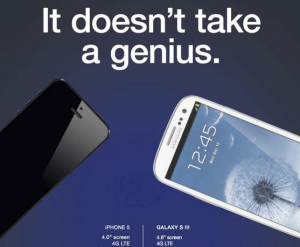According to Doug Sundheim in his HBR blog post, innovation is not key to building a competitive advantage. He claims that “innovation is byproduct” which seems to be contradictory, as Google and Apple have built their success by introducing innovative products. According to Micheal Porter, a company needs competitive advantages, which according Rita McGrath in her article (HBR, June 2013), are “transient” and not “sustainable, leading to a need for constant innovation. With this in mind, what is Sundheim saying?
In my opinion, Sundheim makes a very important point that many companies fail to grasp. He states that “focus [on innovation] tends to… sideline” customers, whereas “focusing on solving… problems tends to be born from customer-centered motives” and naturally leads to innovation. Many companies in their pursuit of delivering the best and greatest product tend to forget about the customer’s needs. If these companies actually used tools such as the value proposition canvas, they would know that the first question they needed to answer is what job does the consumer need to have done. By focusing on customer’s needs, a company can understand what the customer’s pains and gains are, and how to create products that act as the gain creator and pain reliever. By helping a customer reduce his pains, a company generates a point of difference that is actually relevant for the customer.
Sundheim also notes that focusing on solving a customer’s problem develops “determination to see the world through your customers’ eyes” within a company. We can see this with Apple, which only includes functions that reduce customer hassle, despite pressure to introduce novel functions like Samsung that don’t contribute to the user experience. According to Sundheim, such “mindset… can’t be captured in a process” and must be fostered, which is why companies like Apple manage to maintain a competitive advantage. Unlike innovation, dedication to the customer simply can not be copied.
References
http://blogs.hbr.org/2014/10/successful-innovators-dont-care-about-innovating/


